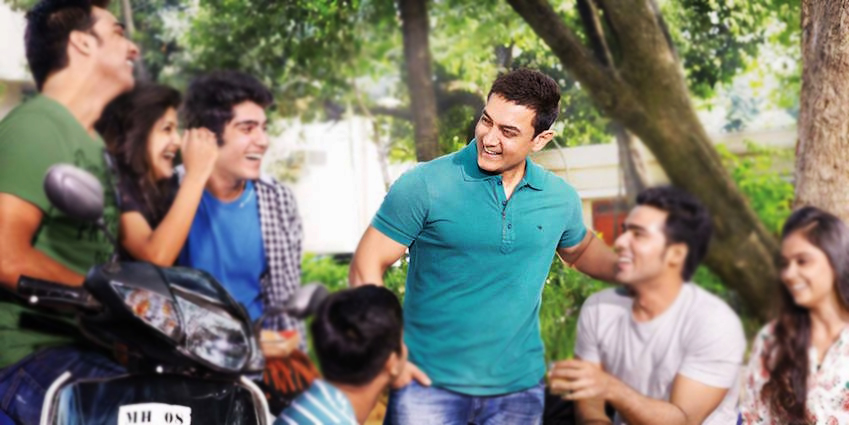
Those of us who live in America are lucky. We have the privilege of living in a society that includes so many religions, backgrounds, and lifestyles. We are also lucky to be on the right side of history, and use what we have learned from the deep-rooted traditions of our South Asian parents and grandparents to know that those traditions are sometimes not moral, even if they are a part of our culture.
However, all of this does not mean that we do not face intolerance and discrimination in America—we most certainly do, not only from outside groups who do not understand us, but also within our own South Asian communities.
Do you remember the last time you heard of a South Asian family friend marrying someone from outside his/her background/religion? What about the condemnation your relatives most likely threw on him/her thereafter? Furthermore, most South Asians have not even heard of LGBTQ weddings happening in our society.
As for the intolerance we’ve faced from the outside, the list can go on and on. But one example that comes to mind is the shooting that took place at the Sikh Temple of Wisconsin in August 2012. It will always be remembered as an act of discrimination and hatred, not only for the Sikh community but for terrorizing our homes of faith.
[Read More: Remembering the Oak Creek Community Two Years After Mass Murder]
But intolerance does not have anything to do with where we live; it has everything to do with who we are.
The Aamir Khan Controversy
So, when I first heard the bold and controversial statement that Bollywood superstar Aamir Khan made about leaving India due to the sudden rise of intolerance during his in-depth conversation with Anant Goenka, Wholetime Director and Head of New Media at The Indian Express, at the eighth edition of the Ramnath Goenka Excellence in Journalism Awards, I thought:
“Well, at least someone said what the rest of the world was thinking out loud.”
I thought, maybe, he was right to think that raising a child in India may be scary due to that intolerance.
“(Wife) Kiran and I have lived all our lives in India. For the first time, she said, ‘should we move out of India?’ That’s a disastrous and big statement for Kiran to make to me. She fears for her child. She fears about what the atmosphere around us will be. She feels scared to open the newspapers everyday. That does indicate that there is a sense of growing disquiet,” he said during the interview, which can be seen below.
Religious violence occurs in India—there is no disputing that fact. Thousands of Hindus and Muslims were killed during the 2002 Gujarat riots—Muslims were killed as in retaliation to the Godhra train burning incident, where Hindus had been burned alive. Christians were also greatly targeted; in the 1999 Human Rights report of the U. S. Department of State, India was specifically criticized for “increasing societal violence against Christians.”
[Read More: Indian Grandfather Paralyzed by Police for Looking Like a ‘Skinny Black Guy’]
Intolerance does not go away by running away from it. It goes away by staying where we are and actively using our compassion and empathy to change it. So, for Khan to make such a statement, claiming him and his wife want to run away from the country’s situation is hard to swallow. We would expect a man of f his stature and caliber to make a difference in the right direction, no?
What’s Happened Since Khan’s Statement
Since his outburst of honesty, Khan has faced many threats and has been asked to leave the country because people are doubting his national pride and years of beautifully crafted films.
On November 25, amid the media frenzy, Khan said in a statement that he is, in fact, proud to be Indian and will not leave the country.
“I stand by everything I have said. To all the people shouting obscenities at me for speaking my heart out, it saddens me to say you are only proving my point,” he said in a statement.
“First let me state categorically that neither I, nor my wife Kiran, have any intention of leaving the country. We never did, and nor would we like to in the future.”
“Anyone implying the opposite has either not seen my interview or is deliberately trying to distort what I have said. India is my country, I love it, I feel fortunate for being born here, and this is where I am staying.”
How can (we and) Khan Change the World
I am not only lucky to be living in America, but I am also lucky to be living in America as a South Asian-American. We are able to use our hyphenated identity to create more accepting South Asian and American communities in the United States for the future. However, it takes people like Khan to be able to create a more accepting future for India.
Celebrities like himself should help India’s people realize that there is more than one religion we can practice and more than one lifestyle we can adhere to.
It’s no denying it, India’s history is plagued with many ups and downs when it comes to intolerance, but we’ve made a lot of progress in becoming more tolerant. However, when a global icon like Khan makes such comments, it only takes the country a few hundred steps backward.
At this point in our world’s history, we will face intolerance and discrimination no matter where we live. But we must work with fervor to change that in every way and become a global community that accepts others regardless of gender, religion, status or creed.
For Khan, it is the place he has called home his entire life: India.
[Feature Image Source: Facebook/Aamir Khan]
 Elizabeth Varghese is a 17-year-old Indian-American high school student born and raised on Long Island, NY. She aspires to become a doctor with a minor in journalism. During her summers, she works at Stony Brook University conducting research experiments and projects with various scientists. She has been a Bharatanatyam dancer since the age of five and is an avid member of her school’s Model UN and Newspaper Club. In her spare time, she enjoys reading, singing, and studying French.
Elizabeth Varghese is a 17-year-old Indian-American high school student born and raised on Long Island, NY. She aspires to become a doctor with a minor in journalism. During her summers, she works at Stony Brook University conducting research experiments and projects with various scientists. She has been a Bharatanatyam dancer since the age of five and is an avid member of her school’s Model UN and Newspaper Club. In her spare time, she enjoys reading, singing, and studying French.




